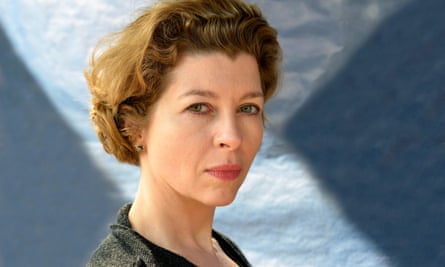I am not the only woman who worked at Playboy and kept her clothes on. When I was hired as literary editor in 2005, Hugh Hefner’s basic recipe for the monthly had not changed much since the 1950s: insistent juxtapositions of high and low culture, the ingredients, as he wrote in his 1953 inaugural editorial, for “a quiet discussion on Picasso, Nietzsche, jazz, sex” at a cocktail party.
Its DNA was spliced from Esquire’s, where Hefner worked as a young man; but the nudity gave it a daring few magazines had. By the time I arrived it was at once chaste, compared with what was on offer online, and sterile, given to an overabundance of models with big breast implants and big hair. The daring had to be found elsewhere. My task, or so I told myself, was to locate it in the fiction and literary pieces.
You can’t be a grown woman in the US without understanding the importance of subversion. Not long after I was hired at Playboy, I ran into a former colleague from a famously highbrow magazine and told her about my new post, and she said tenderly: “Well, erotic fiction has its place, too, doesn’t it?” She had forgotten or no longer cared to know that Playboy, from its inception, published the likes of Ray Bradbury, Arthur Conan Doyle and Alberto Moravia, and soon Bernard Malamud, Vladimir Nabokov, Kurt Vonnegut, Hunter S Thompson and John Updike. Then, during the celebrated Alice K Turner’s long tenure as literary editor, more Updike, Robert Coover, TC Boyle, Haruki Murakami; and women, too, women I would invite to write for the magazine again after an absence of some years: Margaret Atwood, Joyce Carol Oates and Jane Smiley. Hefner’s is a complicated legacy: enticing men from the domestic landscape, offering up bachelorhood in America as ideal and destination, meant that women had to adapt and did, and claim their own part in, and right to, the sexual revolution, however tumultuous that transition. It’s no wonder that I experienced some resistance and concern when approaching writers and their agents.

One of my first assignments was to commission a series of essays about Nabokov’s Lolita, evergreen in its own controversy, for the novel’s 50th anniversary. I went after it with a near religious zeal, eager to prove it was possible to connect Playboy’s past and present in ways that dignified it. In addition to essays by Donna Tartt and John Banville, I invited Azar Nafisi, author of Reading Lolita in Tehran, to contribute. When Nafisi expressed some queasiness about publishing in Playboy, especially given her experiences in Iran, where the oppression of women had become a reflex, I tried to convey to her that the magazine in 2005 was fighting different battles from those it took on decades ago. Unlike other national magazines that still published literary work and especially fiction, it was popular in non-urban areas as much as urban, on military bases and fraternities, and so was uniquely positioned to win converts to the cause of reading and of writing. We editors told ourselves the naked women were merely carnival barkers: they got an audience into the tent, but we kept them with the content.
For my part that couldn’t be accomplished without female writers’ work printed alongside those trademark Playboy nudes. We published AS Byatt on the sensuality of John Donne’s poetry, an excerpt from Lydia Davis’s translation of Madame Bovary, Atwood on comics and more short stories by Oates, Maile Meloy and Michelle Richmond. We ran work by Stephen King, Junot Díaz, Walter Mosley, Sherman Alexie and triumphantly a novel in four parts by Denis Johnson, at 10,000 words per instalment – unheard of then to give fiction so much space, impossible now.
We could pay well, and the money overcame scruples and the admittedly anachronistic quality of the Playboy brand, with its ageing, Viagra-addled avatar. When I pursued work by Salman Rushdie, for instance, his agent quoted me at $10 a word. Our coffers weren’t that deep, and I’m sure the agent knew that, but I couldn’t be affronted for long. The ads for sex toys, the off-colour cartoons, Ms January and Ms July: these required a sense of humour, some irony, cynicism. Not a thin skin.
We were nominated for an American Society of Magazine Editors award for fiction for the first time in 17 years after my first year at the magazine. When Playboy’s cover flashed up on the screen as part of the presentation, flesh and cleavage in the offing, there were giggles. Insiders told us we could never win, and we didn’t. In that room of industry insiders, editors, journalists, we were a joke.
But now, years later, Playboy having fallen even further from whatever relevance it once had in our culture, with Donald Trump in office and anti-intellectualism a kind of national contagion, I miss those trenches we dug and fought from. Well into his late 80s, Hefner looked at every layout, headline and subhead, and if he no longer read every word, he made sure we followed a recipe he recognised.
Until I left in late 2011, I was working for an ideal, not the man. Because by simply putting out a magazine every month that thrived on such strange and jarring juxtapositions, that aimed to answer at once to carnality and intellectual curiosity, silliness and sophistication, we were upsetting the norms, and complacency, our own included. We were subversives, a little suspect, a little uncomfortable, and I, for one, continue to be proud of that.

Comments (…)
Sign in or create your Guardian account to join the discussion